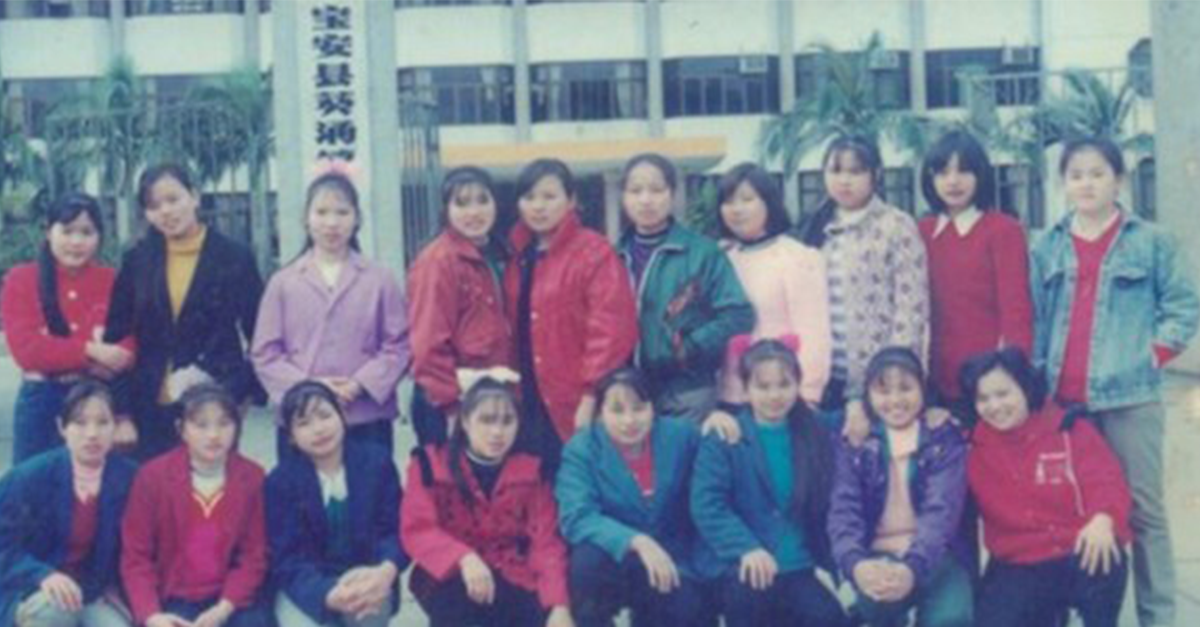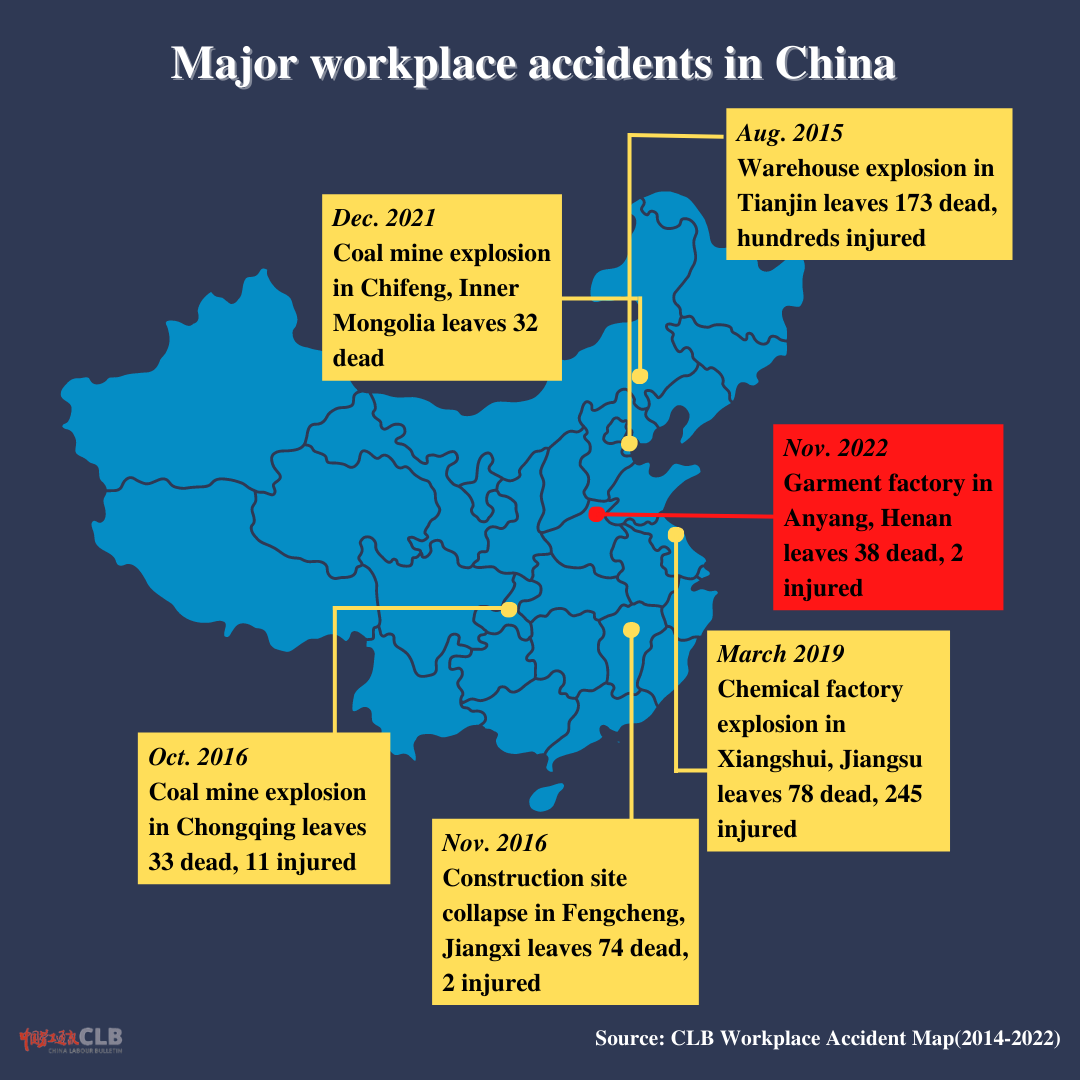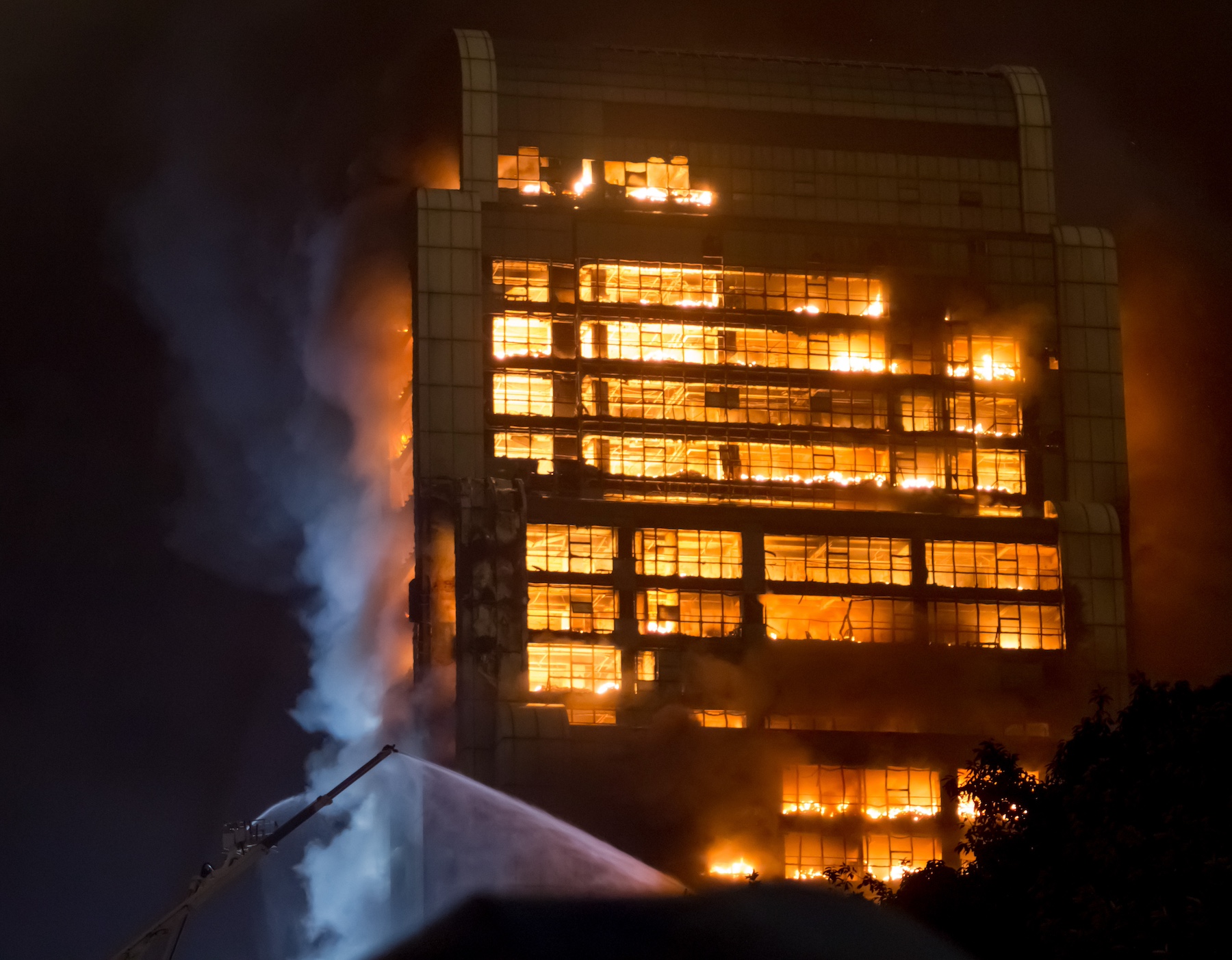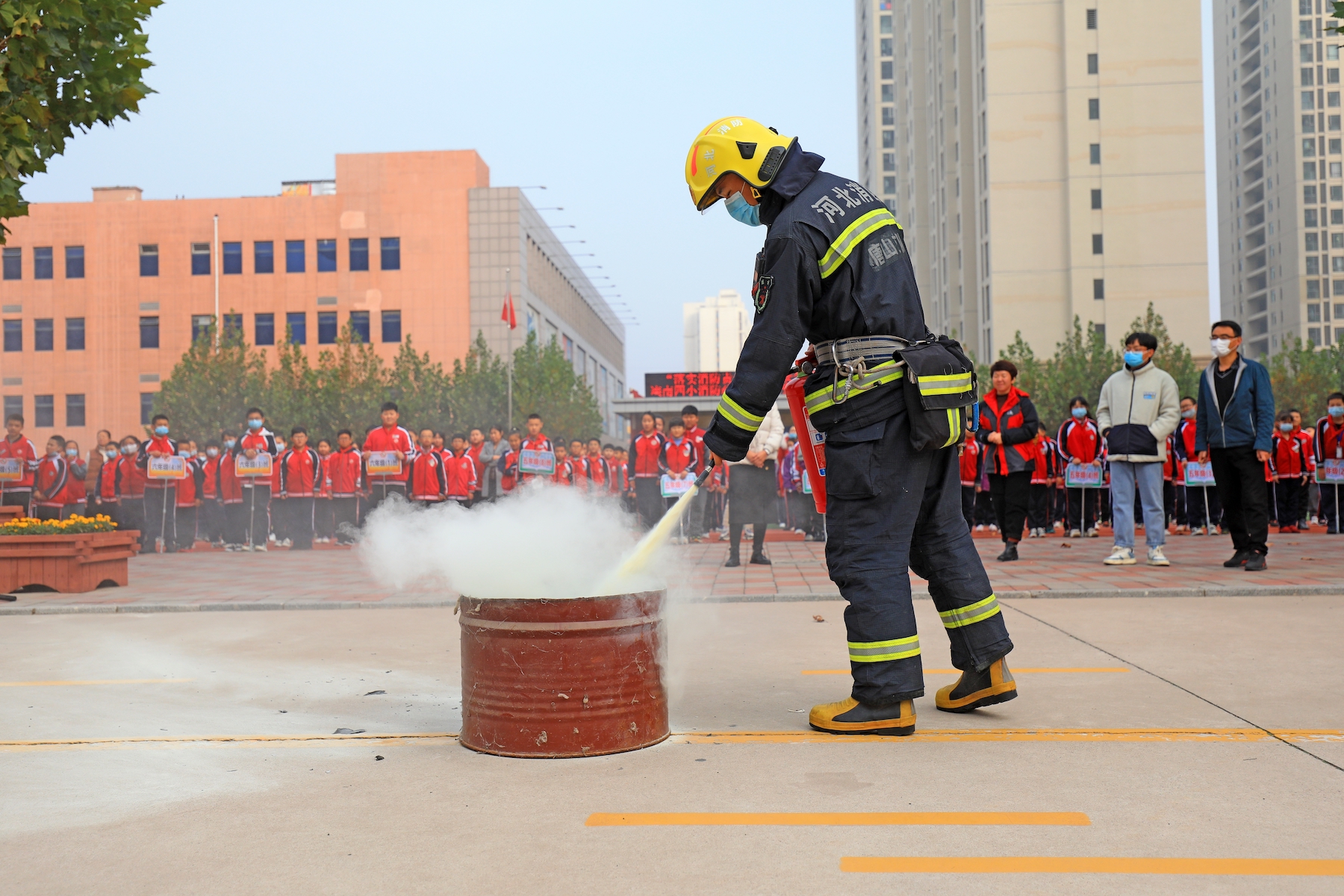Editor's Note: This article was updated on 6 December 2023 to include details on the compensation paid to victims of the Zhili Toy Factory fire.
On 19 November 1993, a fire at the Hong Kong-owned Zhili Toy Factory in Shenzhen killed 87 workers and injured 51 others. The fire was one of many Pearl River Delta factory accidents in the 1980s and 1990s, emblematic of a lack of safety protections for workers.
It was also a singular incident that raised international attention on exploitation in the context of globalisation, as the Zhili fire occurred in the lead-up to major shopping holidays in the West. Further, Hong Kong labour rights NGOs joined together to campaign for the Hong Kong manufacturer and the Italian brand, Artsana S.p.A./Chicco, to take responsibility and pay compensation to Zhili fire victims.

Photograph: 致丽厂的女工
Labour rights groups in Hong Kong formed the Coalition for the Charter on the Safe Production of Toys which advocated for improving conditions in toy factories in China, starting dialogue with labour groups in Hong Kong, and adopting a code of conduct for members of the Coalition.
The Shenzhen government gave the families of each of the deceased around 20,000 - 40,000 yuan. One of the survivors was severely burned and unable to work again. She received one-off compensation of 160,000 yuan, but the amount was calculated only up until retirement age of 60, at a rate of only 200-300 yuan per month, the minimum wage in 1993. The amount was not even enough for her 20 surgeries after the accident, and her family had to raise money for her medical fees.
As for the accountability of the Italian brand, after a great deal of pressure and lobbying by Hong Kong and Italian trade unions and NGOs for four years, Artsana S.p.A./Chicco announced in 1997 compensation of around 10,000 yuan per family. But as of 1999, CLB reported that the Italian brand used the bureaucracy over approving an official list of victims to avoid moving forward with paying compensation to victims, and at that time the funds held in trust by Caritas in Hong Kong had been put toward other charitable causes in the meantime.
The victims and Hong Kong NGOs continued to exert pressure on the brand, and compensation to the Zhili fire victims' families was finally paid in 2000, seven years after the tragedy. According to a Hong Kong activist, each family received 8,000 yuan. Artsana S.p.A./Chicco claimed the money was not compensation based on liability, but simply humanitarian aid.
Now, thirty years on from the Zhili Toy Factory fire, China’s manufacturing sector is in decline and workers are still facing harsh working conditions, employment precarity, and overwork. As for work safety more generally, official data on workplace accidents shows that incidents have dropped significantly. Between 1990 and 1992, more than 20,000 people died in industrial accidents each year. The China Social Statistical Yearbook shows that in 2021, more than 2,000 workers died in manufacturing and commercial accidents.
Large accidents still occur with regularity. Just one year ago, on 22 November 2022, a fire broke out at the Kaixinda Trading Company in Anyang, Henan province, killing 42 garment factory workers and injuring two. The incident was one of the worst manufacturing accidents recorded in CLB’s Workplace Accident Map, which began recording incidents in 2014.

Comparing the 1993 Zhili fire and the 2022 Anyang fire is instructive in understanding workplace safety in China more broadly. Not only were the direct causes of the two accidents similar, but also the underlying root causes related to official mechanisms and worker representation show that much more can be done to protect workers’ lives.
Direct causes of the Zhili and Anyang fires are unsafe building layouts, improper handling of fire hazards, and lack of escape routes or planning
In both accidents, most of the casualties were female migrant workers. The Zhili factory employed about 400 workers, migrant girls or young women largely from Chongqing and Sichuan and Henan provinces. Of the 87 who lost their lives, one victim was only 15 years old. In the 2022 Anyang fire, most of the casualties were middle-aged and elderly women who migrated from nearby villages.
According to the investigation report, the direct cause of the 1993 Zhili fire was a short circuit in the open wires in the warehouse, which ignited the warehouse. Zhili employed unlicensed electricians, installed electrical wires and electrical appliances that did not meet safety requirements, and used overloaded electricity for sustained periods. The wires were not insulated by sleeves, and a large number of flammable items were piled under the power cords. The report also noted that the main switch used a 25 mm thick copper wire instead of a fuse, which cannot be blown in the event of a short circuit.
After the fire started in the warehouse, it quickly spread to the workshop. The Zhili factory has three floors, designed in an illegal "three-in-one" plan that puts the production floor, warehouse, and workers’ dormitories in the same building. The fire began on the first floor, and it was initially small. Workers tried to put it out but had difficulty operating the fire extinguishers. All the workers on the first floor escaped.

Photograph: DKai / Shutterstock.com
The fire quickly spread to the second and third floors. The factory manager on the second floor opened a window and escaped without organizing an evacuation. Nearly 300 workers on the second and third floors tried to flee in panic, but the windows were covered with iron bars and barbed wire. Three of the four exits were sealed. The burning fibres used in the workshop produced toxic gases, and some of the workers stuck in the factory died from these fumes before the fire reached them.
The Anyang fire in 2022 has many similarities with the Zhili fire. According to the investigation report released in August 2023, the two-story building where the fire broke out was owned by Kaixinda Trading Company and was leased to various companies, including the Shangxin Garment Company, where the victims were employed. The building structure contains warehouses and workshops separated only by iron sheets with low fire resistance ratings. Kaixinda Trading Company did not obtain special operation certificates and performed electric welding work on the first floor. It was this welding slag that ignited packaging cartons and led to the spread of the fire. The flammability of the items in the building led to toxic and dense smoke.
The workers who died in Anyang worked on the second floor of the building. Due to the lack of fire separation, it only took three minutes from the time the first-floor warehouse caught fire to the moment the indoor stairs of the Shangxin Garment Company became blocked by smoke. At some time prior to the day of the fire, the automatic alarm and sprinkler system were manually shut off. The person in charge of Shangxin Garment Company did not organize an evacuation of employees and escaped alone through a set of outdoor stairs that he alone was familiar with. Workers never underwent fire drills and did not know of escape paths, so they were trapped in the thick smoke and died.
Government entities and the official trade union have a responsibility to keep workers safe before accidents occur
The indirect causes of the two accidents were also similar. The investigation report of the Zhili fire pointed out that in order to attract foreign investment, the Shenzhen Kuichong local government not only did not strictly require foreign investors to conduct safety management, but also "even bribed and interceded with the fire control team." According to an article by labour relations expert Chang Kai, in the first half of 1993 - prior to the Zhili fire - the fire inspection team determined that fifty of the 85 local factories were unqualified. Among these unqualified factories was the Zhili factory, which was labelled as a unit with “serious fire hazards” and was given thirteen suggestions for rectification.
However, the mayor increased the "food subsidy" of the inspection team by 3,000-4,000 yuan for each of the three team members in exchange for issuing certificates to the fifty delinquent factories. The town government justified this move to "support the economic development of Kuichong" and also stated fears that "Hong Kong businessmen will petition collectively and complain directly to the city government." Of course, this disguised payment is corrupt. For reference, minimum wage at the time was about 200 yuan per month, which is what Zhili Toy Factory workers made.
Further, in the agreement reported by the town government, the monthly rent for the Zhili factory was HK $2,500. In another supplementary agreement that was not reported, the actual monthly rent from the Hong Kong lessee was HK $24,000. This rent difference of nearly ten times amounts to over HK $1.4 million of hidden payments during the five years between the start of Zhili’s operations in 1988 and the date of the fire in 1993.

Photograph: chinahbzyg / Shutterstock.com
The investigation report on the Anyang Fire in 2022 did not point out corruption problems. Still, it mentioned that the local party committee and government "lacked awareness of safety red lines in project approval, lax control, and a blind development impulse...” The report noted that, in the 12 years since Kaixinda Trading Company operated in Anyang, it did not have the proper land, planning, construction, or other licences required by local regulations. The report also stated that the company did not conduct a fire protection design review.
In addition, various departments either failed to perform adequate inspections or failed to follow up after identifying hidden dangers. Only a few days after the fire, the city of Anyang investigated companies like Kaixinda Trading Company that store dangerous and combustible items and juxtapose warehouses and workshops. The authorities shut down 275 companies until they made rectifications, proving that hidden dangers are systemic in the area. Prior to the fire, in 2021 and 2022, the local emergency management bureau entrusted a third-party agency to conduct safety hazard inspections on companies such as Kaixinda Trading Company and Shangxin Garment Company, leading to the identification of a number of problems. However, the emergency management bureau did not follow up or transfer matters such as fire hazards to other departments for handling.
Trade unions should play a greater role in accident prevention at workplaces in China
According to the official accident investigation reports of the respective accidents, the causes of the Zhili fire and the Anyang fire are similar: The use of unlicensed technicians, warehouses and workshops crowded together, lack of firewalls, and lack of safety equipment such as fire extinguishers. In addition, in both cases the workers did not receive fire safety training, those responsible at the factory did not arrange a timely evacuation, the local government prioritised attracting investment over the importance of safety prevention, and various government departments either failed to check worksites for hidden dangers or failed to follow up on known risks.
As for accountability after the accidents and improvements in China’s work safety regime, we can see from the accident investigation reports that little has changed. The 1993 Zhili fire report points out “the need to establish and improve enterprise trade union organizations” regarding work safety prevention. However, the 2022 Anyang fire report does not mention whether the enterprise has a trade union or whether the local or regional trade unions play any role in monitoring work safety. Instead, the Anyang fire report details the responsibilities of enterprises, local party committees, government departments, and regulatory departments.
One notable difference between the two similar incidents has been the international impact. The Zhili Toy Factory produced for an Italian brand, and the products went into the international market. At present, little is known about the supply chains related to the fire in Anyang last year. But the Anyang fire represents unsafe conditions generally in China and illustrates how improperly implementing safety mechanisms in the workplace and lack of local government enforcement leaves all workers unprotected. International brands sourcing from China may have increased leverage to ensure safety standards are met, but without eyes and ears on the ground - in this case, workers and unions on the frontlines of production - how can this be assured?
China’s Work Safety Law was amended in 2021, with new provisions coming into effect in 2022. It contains detailed provisions on official responsibility, including of the trade union. These two cases show that there is a long way to go in implementing the Work Safety Law in practice, and that China’s official trade union must take up its role more seriously according to the law. Responsibility and accountability should extend to the union, not just enterprises and government departments.
In fact, trade unions can play an important role in production safety through close contact with front-line production workers. However, at present, individual workers may be unwilling to point out the company's safety management problems and demand corrections. Therefore, unions are necessary to represent workers’ concerns and use their authority to speak up in front of management to make safety rectifications.
Further CLB reading:
- What You Need to Know About Workers in China: Work safety (last updated September 2021)
- Garment factory fire in Anyang takes 38 lives, injures 2 (November 2022)
- Will China’s trade union finally live up to its obligations under the Work Safety Law? (August 2021)
